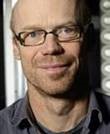Measuring and quantifying the spatio-temporal dynamics of photosynthesis in natural canopies – using the fluorescence signal to map energy metabolism across scales from single leaves to the satellite

watch the recorded webinar online
Speaker: Uwe Rascher (IBG-2, Forschungszentrum Jülich)
Abstract: The efficiency of photosynthetic energy conversion is a fundamental functional trait that determines plant performance and biomass production. However, photosynthesis is regulated on various levels and thus the efficiency of photosynthesis greatly varies in time and space being driven by fluctuating and sometime stressful environmental conditions. In this presentation we will focus on the fluorescence signal that is emitted during light reactions of photosynthesis and which is an established parameter to quantify photosynthetic and non-photosynthetic energy dissipation. Fluorescence methods have the intrinsic advantage that they can be applied on a higher number of samples. Additionally, they can be scaled from single leaves to top-of-canopy approaches, drone based concepts and finally also airborne and satellite observations.
With this presentation we will give an overview on the current knowledge how active and passive fluorescence measurements can serve as indicators for specific plant stresses and actual photosynthesis. We will give an overview on the rapid technical development of fluorescence techniques in the past years and focuss on recent advantages to detect solar-induced fluorescence from passive measurements. We will combine phenotyping approaches with concepts that were brought forward by the remote sensing community, which cumulated in the selection of a dedicated satellite mission (the FLEX - Fluorescence Explorer satellite) of the European Space Agency (ESA), which will provide global measurements of the fluorescence spectrum emitted by the terrestrial vegetation layer.
CV: Uwe Rascher investigates spatio-temporal dynamics and patterning processes of photosynthesis, with new and established non-destructive methods and remote sensing techniques that allow to derive physiological processes. The results allow new insights into basic biophysical processes of charge separation of photosynthesis and provide remote sensing methods that quantify the functional state of plants and plant populations. In doing so, he and his team has build a bridge between the well-understood metabolic processes on the leaf level and the exchange processes of entire ecosystems, which are still only correlation-based. https://www.fz-juelich.de/ibg/ibg-2/EN/Staff/Shoot_Dynamics/Rascher_Uwe/Rascher.html?nn=2173400
